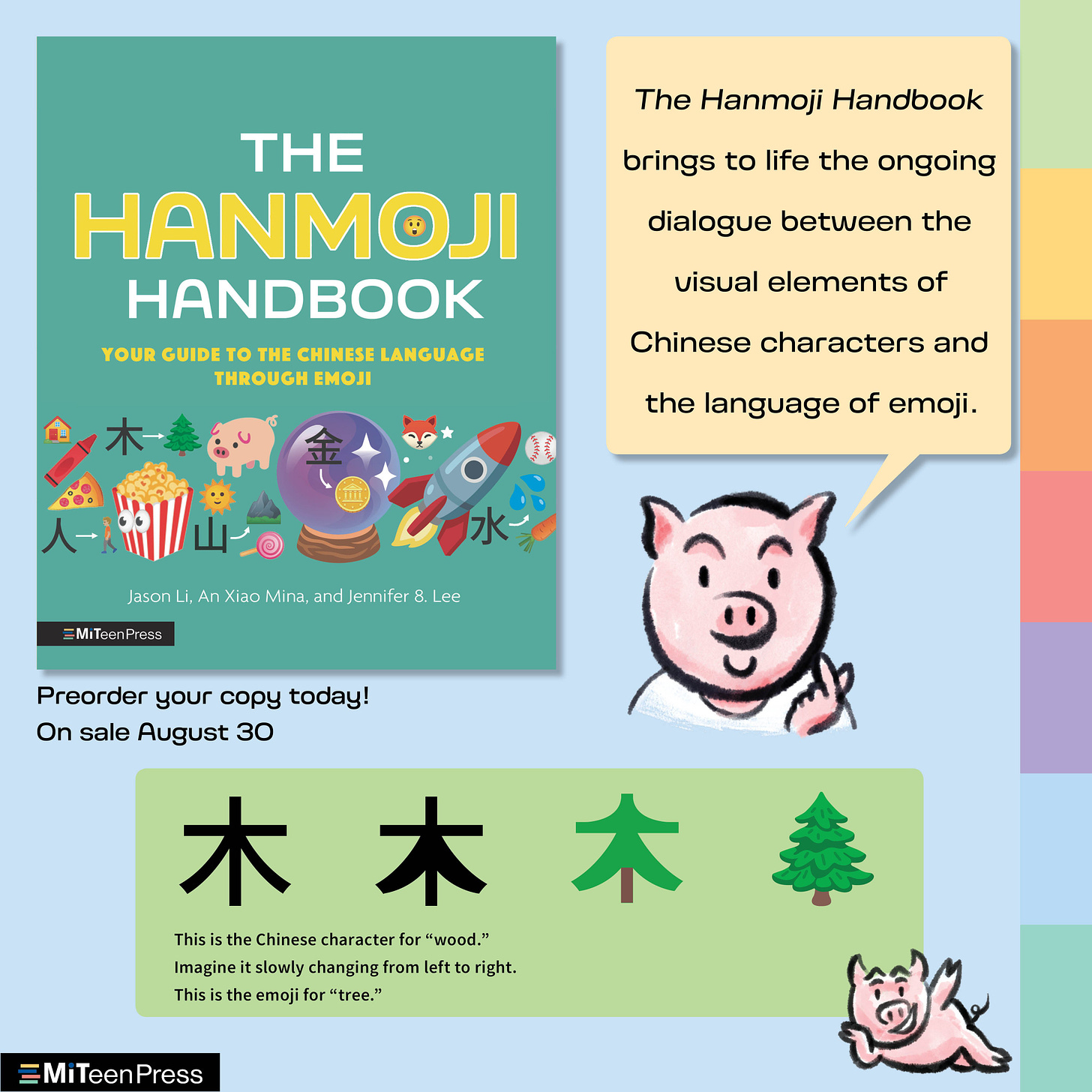About 🤨
Hanmoji Puzzles is your bi-weekly dose of emoji word puzzles. Our puzzles live at the intersection of emoji and the Chinese language, but rest assured they are solvable by Chinese and non-Chinese speakers alike. This project is a spin off from The Hanmoji Handbook: A Guide to Learning Chinese Through Emoji 🐽
Much like the book, the Hanmoji Puzzles showcases the fun and surprising parallels between the emoji and Chinese writing systems. Think of the puzzles as a newsletter-shaped, crossword-puzzle complement to the book 🧩❤️📗
Our newsletter will feature periodic prizes for intrepid readers who answer our puzzles correctly – so stay tuned, stay sharp and stay up to date on your inbox 📥
Why subscribe?
Subscribe to get the latest puzzle in your inbox every other week.
🎁 Once in a while, we will run a harder puzzle that comes with a prize! (If multiple people get it right, we will draw a lucky winner out of a hat.) 🎁
In case you want to solve puzzles from our back issues (and you promise not to look at the answer first), every edition of this newsletter is also archived here online.
About our book
Even though their dates of origin are millennia apart, the languages of Chinese and emoji share similarities that the average smartphone user might find surprising. These “hanmoji” parallels offer an exciting new way to learn Chinese—and a fascinating window into the evolution of Chinese Han characters. Packed with fun illustrations and engaging descriptions, The Hanmoji Handbook brings to life the ongoing dialogue between the visual elements of Chinese characters and the language of emoji. At once entertaining and educational, this unique volume holds sure appeal for readers who use emojis, anyone interested in learning Chinese, and those who love quirky, visual gift books.
More information at hanmoji.org
About our authors
👦🏻 Jason Li is an independent designer, artist and educator. His practice revolves around promulgating bottom-up narratives, exploring networked technology and helping people live safely on the internet. His works have appeared at the Victoria and Albert Museum, Asian Art Museum, and on the BBC. He is an editor at Paradise Systems and a member of Zine Coop. He currently lives in Toronto. More information about him at byjasonli.com
🧘🏻♀️ An Xiao Mina is a creative strategist, writer, and artist whose work has been featured in the New York Times, The Economist, The Atlantic, and Fast Company. She's worked at the intersection of technology and culture for over a decade, at places like Meedan, Hyperallergic and Harvard's Berkman Klein Center for Internet and Society. The author of Memes to Movements, she splits her time between New York and California.
💁🏻♀️ Jennifer 8. Lee is a vice-chair of the Unicode emoji subcommittee and cofounder of Emojination, a grassroots group that advocates for more inclusive and representative emoji. She is also a former New York Times reporter, author of The Fortune Cookie Chronicles, and producer of The Search for General Tso and The Emoji Story documentaries. Lee runs the Plympton literary studio, is from New York City and lives in the cloud. More information about her at jennifer8lee.com




